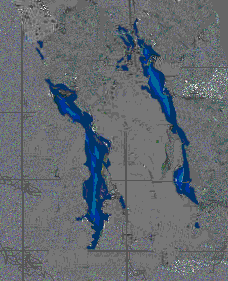This diagram shows the Americas being separated from the Europe and Africa as the seafloor spreads. Continents are grey in color. Youngest seafloor is red and as seafloor gets older it becomes yellow, green and then blue.
Click on image for full size
NOAA/NESDIS/National Geophysical Data Center, Boulder, CO.
Seafloor Spreading
This diagram provides evidence of seafloor spreading by showing the ages of ocean floor in the Atlantic and eastern Pacific Oceans. The red colors are the youngest parts of the seafloor, where fresh new crust is formed as lava seeps up from the deep interior of the Earth at spreading ridges. As new crust forms at these spreading ridges, older crust, colored green in the diagram, moves away from the ridge. The blue portions are the oldest regions of the seafloor. They are either next to continents, which also contain very old rocks, or are near areas on Earth where subduction is taking place.
The diagram shows the American continents being separated from the Eurasian and African continents. This is a very fast model of what has happened to the Earth’s plates over the past 250 million years.
You might also be interested in:
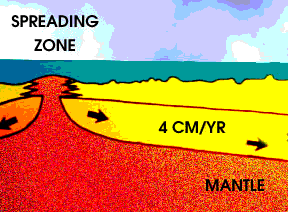
As the Earth cools, hot material from the deep interior rises to the surface. Hot material is depicted in red in this drawing, under an ocean shown in blue green. The hotter material elevates the nearby
...more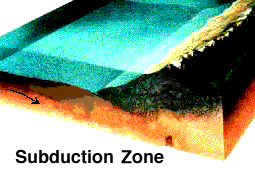
When two sections of the Earth's lithosphere collide one slab of lithosphere can be forced back down into the deeper regions of the Earth, as shown in this diagram. This process is called subduction.
...more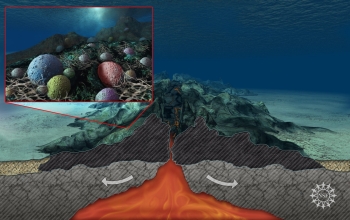
Seafloor bacteria on ocean-bottom rocks are more abundant and diverse than previously thought, appearing to "feed" on the planet's oceanic crust, according to results of a study reported in this week's
...more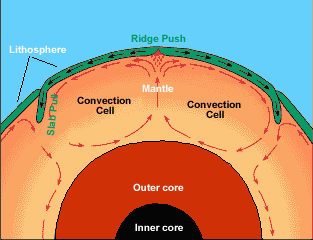
Earth’s center, or core, is very hot, about 9000 degrees F. This heat causes molten rock deep within the mantle layer to move. Warm material rises, cools, and eventually sinks down. As the cool material
...more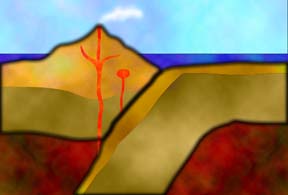
Many kinds of surface features provide evidence of a sliding lithosphere. When two plates move apart, rising material from the mantle pushes the lithosphere aside. Two types of features can form when
...more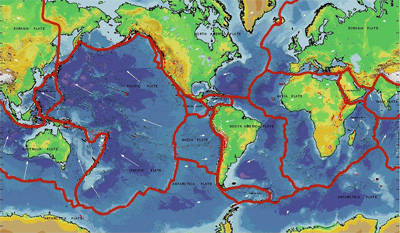
Many forces cause the surface of the Earth to change over time. However, the largest force that changes our planet's surface is the movement of Earth's outer layer through the process of plate tectonics.
...more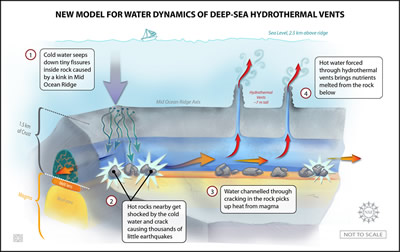
Zigzagging some 60,000 kilometers across the ocean floor, Earth's system of mid-ocean ridges plays a pivotal role in many workings of the planet: in plate-tectonic movements, heat flow from the interior,
...more


